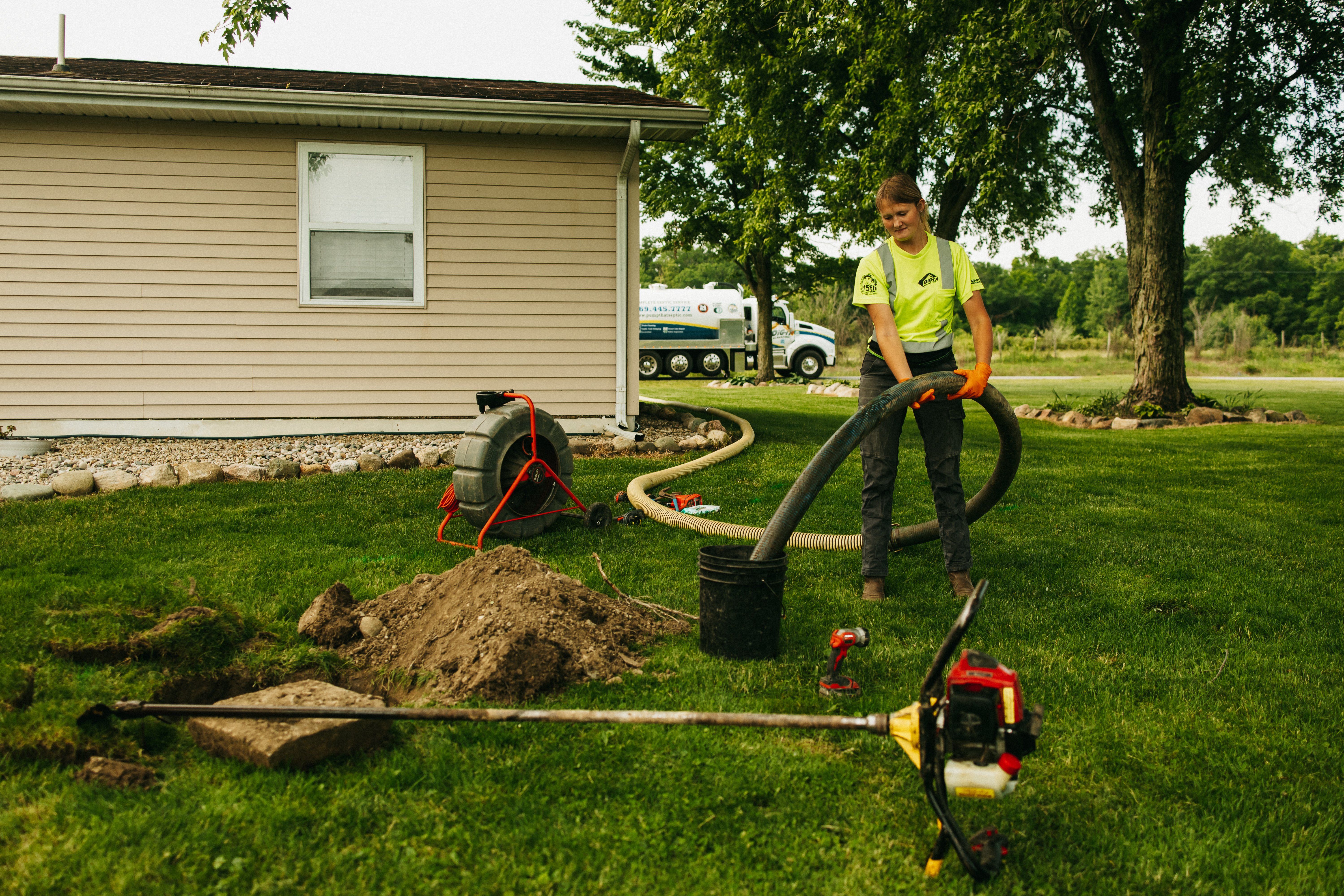You’re in the middle of dinner, the high water alarm starts blaring, and now your drains are backing up. Welcome to panic mode…
If you have a lift station, this is the dreaded moment it demands your immediate attention. Most people don’t even know what a lift station is—until it stops working. And when it does, it’s never at a convenient time. (Holidays. Midnight. Guests in the house. You get the idea.)
At Pump That Septic, we’ve answered hundreds of emergency calls just like this. We’ve seen what breaks, what’s preventable, and what to do the moment your alarm goes off.
This guide will walk you through:
- What a lift station does and why alarms go off
- How to silence the alarm yourself before calling a septic pro
- The 2 habits that prevent most failures
- What to do if it needs a repair
What Is a Septic Lift Station?
A lift station is like an elevator for wastewater. It pumps sewage up to a higher elevation when gravity alone can’t do the job.
You’ll often find one if:
- Your house is on city sewer, and lower than the street
- You’ve got a bathroom or laundry room in the basement
- You have a raised drain field
Why Is the Alarm Going Off?
It’s warning you that something’s wrong. The tank is overfull.
Usually, it’s one of two things:
- The pump isn’t working
- A float is stuck or malfunctioning
What Causes Most Lift Station Failures?
1. Wipes and Hygiene Products
They jam up pumps constantly. Even "flushable" wipes don’t break down. Neither do cotton swabs, feminine products, floss, or paper towels.
If it’s not toilet paper or human waste, don’t flush it.
2. Skipping Maintenance
Kitchen grease, grit, and sludge build up over time. If the tank hasn’t been cleaned in 3–6 years, it’s a ticking time bomb. Floats get sticky. Pumps get jammed with trash or burn out.
Schedule a cleaning every 3-6 years—and use that time to have the pump and floats inspected.
3. DIY or Improper Installs
We’ve seen pumps plugged into outdoor outlets (not good). Wiring crammed inside wet tanks (even worse). These setups don’t last.
When repairing lift stations, we use a sealed control box, hardwire the pump, and keep electrical connections outside the tank so they’re dry and protected.
4. Old, Tired Parts
Pumps wear out. Floats fail. Some parts only last a few years. If yours is older and hasn’t been upgraded for several years, don’t be surprised when the alarm starts screaming.
What to Do If You Need a Repair
Once the alarm goes off:
- Hit the silence button. It’s located on the side or front of the buzzing alarm. If you can’t find it, simply flip the breaker.
- Stop using water. That means no flushing, no laundry, no showers. The tank is already too full.
- Call a septic pro. Make sure the company offers both cleaning of the lift station and can also fix the pump or other electrical components.
This isn’t something you want to wait on. Backup is coming.
Here at Pump That Septic, we’ve responded to midnight emergencies, lake house backups, and weekend disasters. When we show up, we:
- Start by cleaning the lift station and diagnosing the problem. Once diagnosed we will:
- Bring parts that actually last (not cheap ones from hardware stores)
- Never install shortcut setups that cause repeat failures
- Fully rebuild failing lift stations when needed so you’re not calling us again next month
We’ve been working on these systems for over a decade. Whether it’s a float failure, pump burnout, or mystery clog—we’ll get it fixed fast and fixed right.
Final Thoughts: Don’t Wait for the Alarm
Lift stations are out of sight, out of mind—until they’re not. If yours hasn’t been cleaned, inspected, or upgraded in years, now’s the time.
- Avoid flushing trash or kitchen grease
- Get your lift station cleaned every 3-6 years
- Get faulty lift stations upgraded before they fail
The best time to fix a lift station is before it fails. Schedule your lift station maintenance now, and avoid the 2 a.m. surprise.
Lucian Witmer
Lucian was a pump truck driver since 2017 until he moved to marketing for Pump That Septic in 2023. He loves connecting with people and creating educational content that makes a real impact. Outside of work, he enjoys going to concerts, playing the drums, and traveling the world. If Lucian were a car, he'd be an Audi RS6 Avant—because, like station wagons, he's all about things that are rare yet practical.










